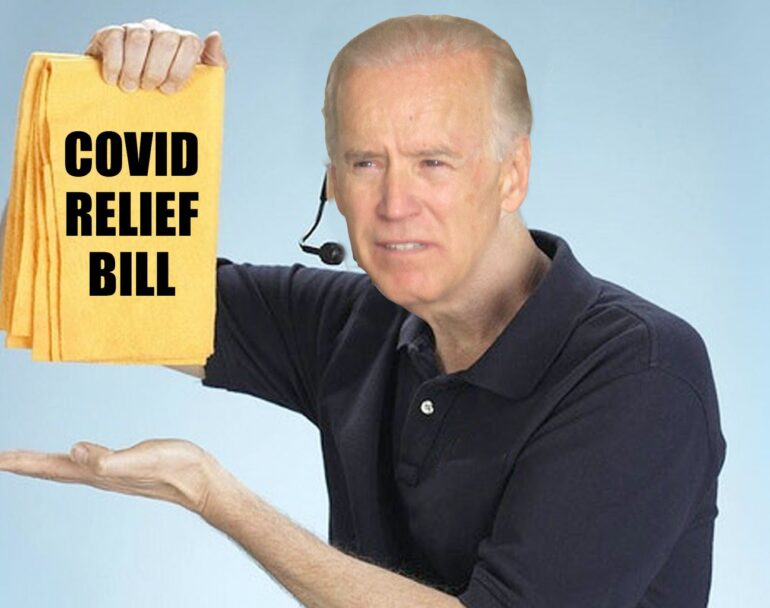
WHAT’S IN BIDEN’S $1.9T CORONAVIRUS RELIEF PROPOSAL?
$350 billion for state and local governments
Despite GOP objections, $350 billion was included for state and local governments to make up for lost tax revenue during the pandemic. But reports show that state and local governments fared much better than expected in 2020. Many states, including California, Virginia, Arizona, Colorado and others, ended up collecting more in 2020 than they did the previous year. A J.P. Morgan survey called 2020 “virtually flat” with 2019. One reason could be the federal supplement to unemployment benefits.
According to a count by the Committee for a Responsible Budget, previous relief bills included $360 billion for state and local governments.
Over $128 billion for schools
Schools will receive $128,554,800,000 in federal aid but only 5 percent of that money will be spent in fiscal year 2021.
$570 million in 15 weeks paid leave for federal employees
Federal employees would be eligible for up to $280 per day, up to $21,000. This would cover sick time, emergencies or payment when an employee is exposed to Covid-19 and must quarantine.
Significant expansion of the Affordable Care Act
The bill includes $45 billion for Obamacare, which is the estimated deficit impact of the expansion included in the Covid-19 relief bill.
Enhanced unemployment benefits
The bill includes $200 billion for enhanced unemployment benefits, though that number has not been confirmed. The Senate bill includes $300 per week in enhanced unemployment, and aid that would extend through Sept. 6 — a bit longer than the Aug. 29 expiration in the House-passed bill. The first $10,200 of the jobless benefits would also be tax-free to households with incomes under $150,000.
$4 billion for agriculture
The bill directs $4 billion to the secretary of agriculture to purchase foods or commodities and to make grants and loans, including over $1 billion for “socially disadvantaged,” or likely minority, farmers. The money for socially disadvantaged farmers would be used to improve land access and to provide outreach and training, and includes loan assistance to pay off up to 120% of the debt.
$50 million in environmental justice grants
$100 million would be made available “to address health outcome disparities from pollution and the COVID–19 pandemic,” and half of that would be used to “identify and address disproportionate environmental or public health harms and risks in minority populations or low-income populations.”
$91 million in “outreach to student loan borrowers
The money would remain available through September 2023, and is listed as “Student Aid Administration within the Department of Education to prevent, prepare for, and respond to coronavirus including direct outreach to students and borrowers about financial aid, economic impact payments, means-tested benefits, unemployment assistance, and tax benefits, for which the students and borrowers may be eligible.”
Other provisions include:
$270 million for the National Endowments of the Arts and Humanities
$200 million for the Institute of Museum and Library Services
$10 million for the “preservation and maintenance of Native American languages”